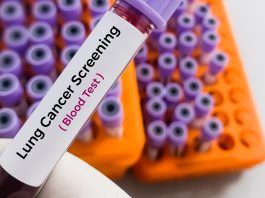Researchers funded by Cancer Research UK have pioneered a fluorescent dye that assists surgeons in prostate cancer surgery.
The glowing dye, developed by University of Oxford experts, sticks to prostate cancer cells to help surgeons remove them in real time.
During the first stage of the ProMOTE study, the dye enabled surgeons to remove all cancerous tissues, reducing the probability of the cancer recurring and preserving healthy tissues.
This helps to avoid life-changing side effects following prostate cancer surgery and picks up cancerous tissues not detected by the naked eye or other clinical methods.
With around 52,300 cases of prostate cancer each year in the UK alone, giving surgeons an extra pair of eyes could have significant impacts on improving cancer treatment outcomes.
Nuffield Professor of Surgery at the University of Oxford, and lead author of the study, Professor Freddie Hamdy, explained: “We are giving the surgeon a second pair of eyes to see where the cancer cells are and if they have spread.
“It’s the first time we’ve managed to see such fine details of prostate cancer in real time during surgery.
“With this technique, we can strip all the cancer away, including the cells that have spread from the tumour, which could give it the chance to come back later.
“It also allows us to preserve as much of the healthy structures around the prostate as we can to reduce unnecessary life-changing side-effects like incontinence and erectile dysfunction.
“Prostate surgery is life-changing. We want patients to leave the operating theatre knowing that we have done everything possible to eradicate their cancer and give them the best quality of life afterwards. I believe this technique makes that possibility a reality.”
How the fluorescent dye works
The glowing dye attaches to a special targeting molecule known as IR800-IAB2M to allow researchers to visualise tumour edges and detect spread to nearby tissues and lymph nodes.
This helps ensure complete removal of cancerous tissues while preserving healthy prostate areas, reducing the risk of cancer recurrence and minimising postoperative side effects.
The dye and marker molecule target Prostate-Specific Membrane Antigen (PSMA), a protein on the surface of prostate cancer cells.
The marker, derived from a ‘minibody’, binds exclusively to PSMA. This technology was developed by Oxford scientists in collaboration with ImaginAb Inc., based in Inglewood, California.
Improving prostate cancer surgery
To test the novel method, 23 men with prostate cancer received an injection of fluorescent dye before undergoing robot-assisted radical prostatectomy.
Surgeons utilised an imaging system that shines a special light on the prostate and surrounding areas, causing the cancer cells to glow.
For several patients, the dye revealed clusters of cancer cells that had spread from the tumour and were invisible to the naked eye.
Future potential
Although still in early clinical development, this marker dye could become a routine tool for surgeons, enabling them to visualise and remove every part of the cancer during prostate cancer surgery.
The imaging system could be integrated into robot-assisted surgical tools. Additionally, the marker dye could potentially be adapted for other cancers by modifying the protein used to attach to cancer cells.
Further clinical trials are underway with larger patient groups to determine if this technique can remove more prostate cancer while preserving more healthy pelvic tissue compared to current surgical methods.









